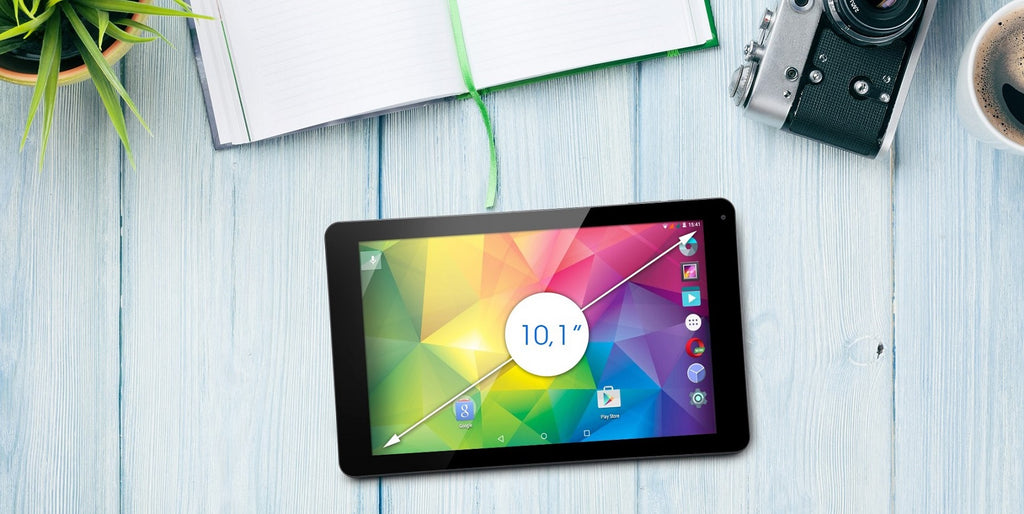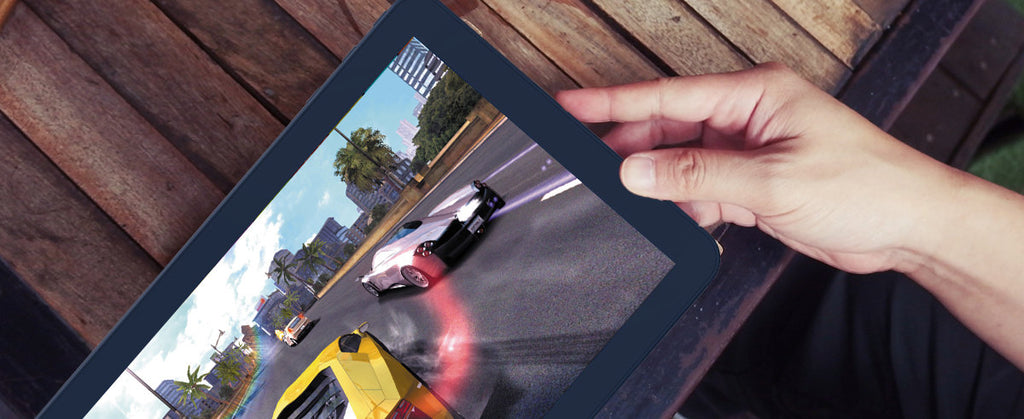
Tablet Buying Guide. How to choose the right tablet?
We're here to tackle your burning questions about finding the perfect tablet: which one's the cream of the crop, and which offers the best bang for your buck in your budget. To make your life easier, I've compiled all the answers in one convenient spot, smoothing out the bumpy road of tablet hunting.
You might be surprised that I didn't carve out a separate section for operating systems. Android and iOS might steal the spotlight, but let's not overlook the cool factor of Windows tablets, they're still holding their own in the mass market.
When scouting for an Android tablet, I highly recommend one with the Google Play Store onboard.
Amazon's Fire tablet lineup, while budget-friendly, comes with a pared-down version of Android and a smaller pool of apps and games. Opting for a Fire tablet means access to only about 30% of the apps available on the Google Play Store, plus you miss out on Google apps like YouTube, Maps, and Gmail.
I've cut Amazon some slack in the past due to its unbeatable prices, but nowadays, there's stiff competition in the same price range.

Do not follow the lowest price and/or one specific brand.
You might find this surprising, but I believe two things are counterproductive when hunting for equipment. Firstly, fixating on the lowest possible price rarely leads to quality products (though there are exceptions to every rule! But they're hard to come by...). Secondly, sticking solely to products from one particular brand—usually a favourite limits our options and prevents us from exploring other equally (and sometimes more) intriguing alternatives at similar or even lower prices.

Screen size, proportion, and resolution – something for everyone
When it comes to tablets, opinions and preferences are as diverse as the people who wield them. Everyone seeks the perfect balance of screen size, proportions, and resolutions tailored just for them. Here's a quick tip: the more pixels per inch, the crisper and clearer the text appears. For instance, 1280 x 800 pixels will pop more on a seven-inch screen (216 ppi) than on a ten-inch one (149 ppi).
Your choice of screen size ultimately boils down to personal preference. If you're always on the move, you might lean towards sleek 7- or 8-inch models, which often boast calling capabilities. Meanwhile, those craving ample workspace will gravitate towards larger screens, where bigger means better content visibility.
But wait, there's more! Before settling on a tablet, take a peek at its display type. While IPS screens reign supreme for wide viewing angles and vibrant colors, you might still stumble upon TN screens—though thankfully, those outdated relics are becoming increasingly rare!
Last but not least, screen proportions matter too—whether it's the classic 4:3 or the widescreen 16:9 aspect ratio. At Neocore, we're all about crafting tablets optimized for your viewing pleasure, so rest assured, you're in good hands!

Choosing between 4:3 and 16:9/10 screen ratios is crucial, as each serves different purposes. The 4:3 aspect ratio, like that found in iPad, excels for browsing websites and reading magazines/documents, while 16:9 found in NEOCORE Tablets, is ideal for video consumption, offering a more cinematic experience.
However, the ultimate decision lies with you, tailor your tablet's aspect ratio to suit your personal preferences, just like you would its diagonal size.
Now, onto another often overlooked consideration: screen protection. Whether it's Gorilla Glass, Corning Fit, or any other protective glass, it's essential to assess if your desired tablet offers adequate safeguards. For Windows tablets, delve deeper into features like the number of pressure points supported, which can elevate stylus usage for professional applications. Additionally, keep an eye on multitouch capabilities, whether it supports five or ten fingers simultaneously for seamless interaction.

Processor – eight cores are not always better than four.
In the contemporary tablet PC market, while quad-core processors remain prevalent, octa-core processors are increasingly common. It's essential to debunk the misconception that more cores automatically translate to better performance; instead, efficiency is determined by architectural design and technological advancements.
Moreover, the impact of screen resolution on device performance remains significant. Higher resolutions can strain the processor, potentially affecting overall performance, particularly in graphics-intensive tasks.
Graphic capabilities are crucial for an immersive gaming experience. Advanced graphics processing units (GPUs) are necessary for rendering detailed visuals in demanding titles.
Additionally, the processor's performance is augmented by operational RAM. While 2GB RAM is often the minimum requirement for Android devices, 4GB RAM is recommended for smoother multitasking and enhanced performance. Some tablets also offer virtual RAM options to further optimize system performance.
These factors collectively contribute to the speed, efficiency, and overall user experience of modern tablet PCs.
Internal storage.
It's widely understood that ample storage space on your tablet allows for storing more multimedia content, games, and documents.
Nowadays, most tablets start with a minimum of 16GB, while the standard options typically offer 32GB or 64GB. For those requiring even more storage, the best choice would be 128GB or 256GB options, although tablets with such capacities are less common.
Expansion options are equally crucial, and most tablets come with a microSD card slot for this purpose. Unlike smartphones where this feature is often omitted, it's still standard in tablets. However, it's essential to check the maximum supported capacity of the microSD cards. Some tablets effortlessly handle up to 1TB or even 2TB, like the latest Neocore tablets, while others have limitations, typically up to 512GB.
Battery – the greater capacity, the better.
We buy tablets because we don’t want spend hours connected to a charger. We want to have a mobile device that works for as long as possible on one charge. Most believe that the larger the cell's capacity, the longer the operation time should be. This is not a reality in most cases. Equally important are things like the display resolution, the CPU used (more or less power-hungry), and the operating system version, especially for Android, which can have different power management levels.
To illustrate what I am talking about: a tablet with a 10.1" screen, a resolution of 1920 × 1200 pixels, and a 5000 mAh battery discharges faster than the model with the parameters: 10.1" 1280 × 800. For example, neocore E2S with HD screen and 7000 MAh play videos for more than 15 hours.

Communication facilities – important for some and unnecessarily for others.
In today's tablet market, regardless of the price point, you can expect Wi-Fi and Bluetooth capabilities. When it comes to Wi-Fi, it's worth checking the supported ranges, while for Bluetooth, consider the versions available. While there's been debate about the necessity of an internal modem for 3G or LTE, having one can prove invaluable when you're not within reach of a Wi-Fi hotspot—though with smartphones able to act as hotspots, such situations are rare.
Opting for a model with mobile connectivity typically means paying extra compared to the basic Wi-Fi version. However, this investment not only grants internet access wherever there's a mobile network but also enables making phone calls. In a pinch, smaller tablets can even serve as a substitute for smartphones.
Tablets often come equipped with GPS, sometimes even with Glonass, making them handy for navigation or simply finding your way around unfamiliar places. While NFC is less common in tablets, it's still worth noting its presence in some models.
As a general rule, the more expensive the tablet, the more features it tends to offer. However, it's essential to consider your actual needs to avoid overspending on features you won't use. While extra bells and whistles are enticing, if they're not something you'll utilize, why pay for them?
Ports and connectors – sometimes it's worth getting above the standard.
The micro USB port serves as a standard for data transfer between the tablet and the computer, as well as for charging. In most cases (though not always), you can also connect peripheral accessories to it. If you're keen on using USB flash drives or accessories like a USB mouse, make sure to check if the device supports USB OTG before making a purchase.
Furthermore, every tablet comes equipped with a microSD card slot. Nowadays, finding a full-sized SD card slot for expanding internal memory is rare. Most Android tablets also feature a 3.5mm audio jack, allowing you to enjoy music or movie dialogue through headphones without relying on Bluetooth.
For tablets with 5G or LTE capabilities, there's an additional SIM card slot, typically micro or nano-sized. While HDMI output—often in micro form—is less commonly found in tablets, the consolation lies in the increasing prevalence of Miracast technology. Miracast facilitates wireless transmission of images and sound to external screens, such as TVs, offering a modern alternative to HDMI connectivity.
Camera and webcam – they don’t always matter.
Certain components, often top priorities in smartphones, may hold a different level of importance in tablets. One such example is the camera. While some individuals enjoy snapping photos with tablets, the quality can sometimes leave something to be desired. If photography is a priority for you, remember that the size of the camera sensor matters more than the number of megapixels, although in most cases, more megapixels mean better quality.
Moreover, tablets are frequently used for video conversations via platforms like Hangouts or Skype. If you plan to use such applications frequently, it's crucial to consider the quality of the front webcam. Look for a camera with at least 2 megapixels.
Speakers.
When polling a large group about their priorities in selecting a tablet, it's estimated that roughly one in ten will emphasize the importance of speakers (though this is speculative). They'll emphasize the desire for both loudness and clarity. Ideally, speakers should be positioned at the front and directed towards the user, rather than at the bottom or side edges, where they can easily be obstructed by the user's hands while holding the tablet.

Others.
As a woman, I prioritize how a device presents itself, focusing on design and quality of performance before diving into its technical specifications. When searching for a device, considerations like sleek dimensions (no bulky frames, please!) and manageable weight are crucial. While hybrid devices may be heavier than tablets, they should still remain within reasonable limits.
It's essential to note that opting for a tablet from a market giant often ensures better support and updates compared to smaller companies.
We buy the equipment with future use in mind – a summary.
Amidst the sea of features and price tags, choosing the right tablet can be a daunting task. But let's cut through the noise. If you've got a budget in mind and specific criteria to meet, don't just jump at the cheapest option available. I'm not saying you need to break the bank. No. What I'm advocating for is investing in quality that lasts—a product that won't have you scrambling for a replacement in a year or two, maybe even three. Get yourself a tablet with staying power, one you can rely on for several years. Treat it like the savvy investment it truly is.
I hope this guide will help you choose the right tablet. If you found the guide useful, please feel free to Share. Comments are welcome too.
Monica

Comments
Leave a comment